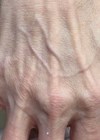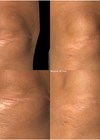The rise in interest and demand from patient and medical practitioners in skin quality and associated regenerative treatment modalities continues [1]. Polynucleotides, specifically High-Purification Technology (PN-HPT®), are among some of the most popular regenerative medical treatment approaches [2].
The mode of action of these intuitive technologies is widely reported, and they are diverse in their indications and benefits for the face, neck and body, which include promoting hydration and scavenging of free radicals, enhancing collagen synthesis, as well as increasing the number and viability of fibroblasts [3,4].
It is increasingly recognised that combined modalities synergise and maximise treatment outcomes, often prolonging results, whilst addressing multiple aspects of ageing [5]. A combination treatment approach holistically supports a long-term journey, whilst reinforcing a natural and patient-centred approach.
In the author’s experience, combining linear / non-cross linked hyaluronic acid (HA) alongside PN-HPT® can deliver natural and targeted results by refining localised areas of concern as well as achieving global improvements in skin quality, particularly around the perioral and periocular areas.
This case report will share the clinical outcomes of combining polynucleotide (PN-HPT®) alongside a linear HA skinbooster containing high-molecular weight HA, as well as glycerol to both strengthen and prolong the HA degradation, over a course of three sessions.

Case report
The patient was a 64-year-old caucasian female with no significant medical history or prescribed medications. She had no known allergies but was a current smoker. Her skincare regime was inconsistent, with no regular use of active ingredients or medical grade products. She had not had any prior medical aesthetic or skin rejuvenation procedures. Her skin ageing (face and neck) was assessed as Glogau grade IV and she was counselled around the importance of using a broad spectrum daily SPF on areas exposed to daily UVA / UVB.
The patient’s skin quality was her key concern, specifically elastosis, hyperpigmentation, vascularity / visible inflammation, as well as photodamage (enlarged pores / textural roughness).
A treatment plan was formulated on the basis of addressing skin concerns with a combined course of PN-HPT® alongside a liner non-cross linked HA skin booster to target localised areas of concern around the periocular, forehead and perioral areas. We undertook a detailed consultation pertaining to risks vs. benefits, as well as the approximate timeframe to begin to visualise improvements, specifically in relation to the regenerative nature of the technologies delivering gradual and progressive improvements over time, and often lasting from 8–10 months in the author’s experience.
Treatment 1: PolyPhilTM next to face and neck (4mls) and 2mls of croma revitalis® with a combination of intradermal needle and cannula approaches to localised forehead lines, perioral, periocular mid and submalar regions.
Treatment 2: PolyPhilTM to face face and neck (4mls) and 2mls of croma revitalis® with a combination of intradermal needle and cannula approaches to localised forehead lines, perioral, periocular, mid and submalar regions.
Treatment 3: PolyPhilTM next to face and neck (4mls) & 2mls of croma revitalis® with a combination of intradermal needle and cannula approaches to localised forehead lines, perioral, periocular mid and submalar regions.
The treatment results exceeded expected outcomes with regard to natural improvements in skin tone, texture, hydration, hyperpigmentation and elasticity. There was a noted reduction in visible inflammation / vascularity and self-reported textural improvements in the skin surface. There was a progressive improvement in skin firmness and thickness, demonstrating the effectiveness of the regenerative combined approach.
Discussion
The current scope and breadth of regenerative medical aesthetic technologies for addressing skin quality concerns is an exciting offering for clinicians and patients. These unique modalities are arguably an essential offering within medical aesthetic clinics, owing to the diverse suitability, range of indications and benefits for both male and female individuals. PN-HPT® as well as linear / non cross-linked HA skin boosters demonstrate high performing stand-alone treatment benefits, as well as synergistic and amplified outcomes when used in combination to achieve exceptionally natural and lasting improvements in skin health and quality.
References
1. Wang JV, Akintilo L, Geronemus RG. Growth of cosmetic procedures in millennials: A 4.5-year clinical review. J Cosmet Dermatol 2020;19:3210–12.
2. Bartoletti E, Cavallini M, Maioli L, Massirone A, et al. Introduction to Polynucleotides Highly Purified Technology. Aesthetic Medicine 2020;7(1):43–7.
3. Collangelo MT, Govoni P, Beletti S, et al. Polynucleotide biogel enchances tissue repair, matrix desposition and organization. J Biol Regul Homeost Agents 2021;35(1):355–62.
4. Lee KWA, Chan KWL, Lee A, et al. Polynucleotides in aesthetic medicine: a review of current practices and perceived effectiveness. Int J Mol Sci 2024;25(15):8224.
5. Cartier H, Hedén P, Delmar H, et al. Repeated full-face aesthetic combination treatment with abobotulinumtoxina, hyaluronic acid filler, and skin-boosting hyaluronic acid after monotherapy with abobotulinumtoxina or hyaluronic acid filler. Dermatol Surg 2020;46(4):475–82.
Declaration of competing interests: The author works collaboratively and on a consultancy basis as a trainer and speaker for CROMA UK.







